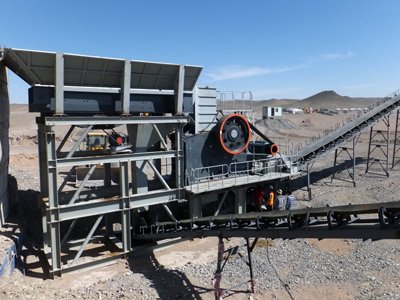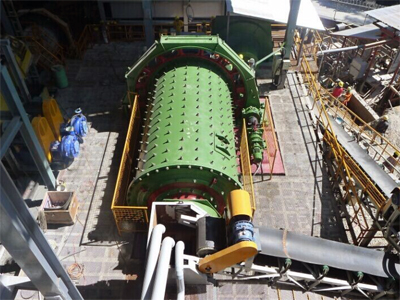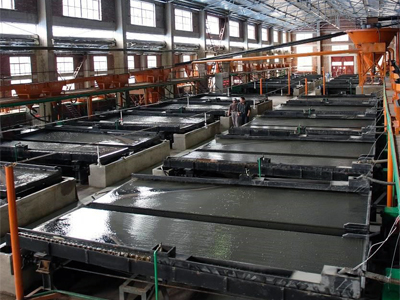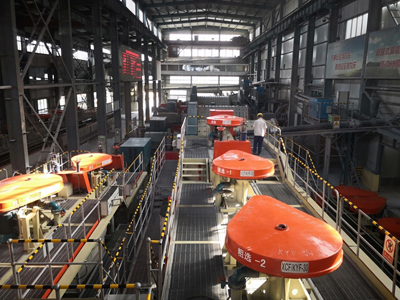-
Address: N0.2555,Xiupu Road, Kangqiao
Industrial Area, Pudong, Shanghai -
Call Us: (+86) 021-51095338
[email protected]
Prominer has the ability to supply the complete industrial deep processing solution to supply the quartz sand and high purity quartz (HPQ) sand. The quartz sand is widely used in glass, ceramic, casting, construction industry and filler for rubber, paper and paint industry. The HPQ sand is strategic mineral using for high-tech industry such as semi-conductor, optical, lighting, quartz glass, crucible and solar energy industry.
Quartz Slab Sands
In recent years quartz slab industry develops very fast as it is used widely in room decoration especially in kitchen, thus a great demand of white & transparent quartz sand is open for the market. Due to the simple production process, just crushing, optical sorting and sieving, the investment return cycle is short and the benefit well. Prominer is familiar with the complete industrial chain of the quartz slab, from the material sand production technology till the final quartz slab manufacturing plant and thus can provide support on every stage.

Quartz Processing & Purification Plant Description:
To get qualified quartz sand/powder, the first aim is to remove the impurities inside the quartz. Specific expertise in geology, chemical analysis and high purity processing are required in order to convert raw mineral quartz into high purity & high-value final product. Based on the geological setting, lab test and pilot test, Prominer supplies tailor-made technology to remove the fluid and/or mineral inclusions. Depending on the final quality and value, processing into high purity or high value quartz involves advanced technology such as:
I. Physical Quartz processing technology:
Crushing & Grinding Optical Sorting HIMS Magnetic Separation Flotation.II. Chemical Quartz processing technology:
Mixed acid treatment Hot Chlorination CalcinationIII. Thermal treatment:
Free contamination sinteringQuartz crushing & grinding system:
Most of the quartz sand application field has strict requirements on its size range, so during the crushing and grinding process, suitable crushing & grinding solution is required to liberate quartz crystals from gangue sufficiently without contamination, meanwhile minimizing the under-size particle production.
The purity of quartz sand determines its value and application fields, and most processing is for removing the mineral impurities. So, the way to prevent new contamination during crushing and grinding process is also very important. Ceramic grinding system, stainless steel connecting parts, clean working environment and dedusting system are very helpful to minimize the emergence of new impurities.

Quartz Optical Sorting:
Optical sorting is a new and advanced technology to separate the mineral ore based on the difference of the material optical properties. It uses the photoelectric detection technology to automatically separate the particles of different optical characteristics from the granule materials. The optical sorting machine consists mainly feeding system, optical detection system, signal processing system and separation execution system. Compared with traditional manual sorting, it is with much higher efficiency.
Quartz sintering process:
Quartz lumps production causes fragmentation of the quartz rock along its crystal and impurities boundaries. Since crystal boundary contains most of the mineral impurities, the liberation of its crystal and impurities boundaries is very important in downstream processing. The calcination plus water quenching process is very effective to reach the aim of removing impurities.
Apart from the common thirteen types of impurities such as K, Na, Li, Mg, Ca, Ti, Cr, Mn, Fe, Co, Ni, Cu, Al, the gas & fluid inclusion is also the main impurity needs to be removed. During the sintering process, the crack will present at gas & fluid content area that also contain some mineral impurities. Sintering plus water quenching process is a kind of selective fragmentation technology to select liberation of gas and fluid inclusion.
In order to prevent the new contamination issues, high purity quartz glass is chosen as the sintering chamber.
Quartz Magnetic separation & flotation process:
Attrition is applied to clean the surface of the quartz particles. Thereby fine particles attached to quartz surfaces, e.g. clay minerals or iron oxide coatings, are liberated, which allows the subsequent physical separation including magnetic separation and flotation process.
Magnetic separation removes heavy minerals from quartz as they are mostly paramagnetic or even ferromagnetic. These minerals are attracted towards increasing magnetic field strength. Most of the gangue minerals are weak magnetic minerals, so the high-intensity magnetic separator is required. Generally, there are two types high-intensity magnetic separator including permanent magnetic type and electromagnetic type.
Froth flotation selectively separates minerals according to the difference of those to be wetted, enhanced or suppressed by conditioning reagents. To prevent the new impurities obtained, the flotation cells with rubber or plastic liner is necessary.
Chemical processing: Chemical treatment is an important addition to physical processing methods in order to achieve maximum purity quartz through the removal of surface impurities. Leaching and hot chlorination are the two chemical treatment processes.
During mixed acid treatment, medium to strong mineral acids are used at elevated temperatures. A combination of several acids can be used (HF, HCl, HNO3) to improve chemical purification results. Mineral impurity like feldspar, mica, which is very difficult to liberate during physical processing, are dissolved in the process of mixed acid washing. Additional impurities, enriched in micro fissures and structural dislocations, can be removed by the enhanced dissolution of quartz.
After boiled in reactor with sufficient time, quartz will be rinsed by deionized water washing away the dissolved impurities.
Hot chlorination
In the hot chlorination process, quartz is heated to temperatures of 1,000 – 1,200 °C in a chlorine or hydrogen chloride gas atmosphere. This refining process is suitable to specifically reduce the level of alkali metal, alkaline-earth metal, and transition metal impurities which are highly restricted in semiconductor applications.
Silica Sand is quartz that over time, through the work of water and wind, has been broken down into tiny granules.
Silica sand deposits are most commonly surface-mined in open pit operations, but dredging and underground mining are also employed. Extracted ore undergoes considerable processing to increase the silica content by reducing impurities. It is then dried and sized to produce the optimum particle size distribution for the intended application.
For industrial and manufacturing applications, deposits of silica-yielding products of at least 95% SiO2 are preferred. Silica is hard and chemically inert and has a high melting point, attributable to the strength of the bonds between the atoms. These are prized qualities in applications like foundries and filtration systems. Industrial sand’s strength, silicon dioxide (SiO2) contribution, and non-reactive properties make it an indispensable ingredient in the production of thousands of everyday products.
Glassmaking: Silica sand is the primary component of all types of standard and specialty glass. It provides the essential SiO2 component of glass formulation, and its chemical purity is the primary determinant of colour, clarity, and strength. Industrial sand is used to produce flat glass for building and automotive use, container glass for foods and beverages, and tableware. In its pulverized form, ground silica is required for production of fiberglass insulation and reinforcing glass fibers. Specialty glass applications include test tubes and other scientific tools, incandescent and fluorescent lamps, and television and computer CRT monitors.

Metal Casting: Industrial sand is an essential part of the ferrous and non-ferrous foundry industry. Metal parts ranging from engine blocks to sink faucets are cast in a sand and clay mold to produce the external shape, with a resin bonded core creating the desired internal shape. Silica’s high fusion point (1760°C) and low rate of thermal expansion produce stable cores and molds compatible with all pouring temperatures and alloy systems. Its chemical purity also helps prevent interaction with catalysts or curing rate of chemical binders. Following the casting process, core sand can be thermally or mechanically recycled to produce new cores or molds.
Metal Production: Industrial sand plays a critical role in the production of a wide variety of ferrous and non-ferrous metals. In metal production, silica sand operates as a flux to lower the melting point and viscosity of the slags to make them more reactive and efficient. Lump silica is used either alone or in conjunction with lime to achieve the desired base/acid ratio required for purification. These base metals can be further refined and modified with other ingredients to achieve specific properties such as high strength, corrosion resistance, or electrical conductivity. Ferroalloys are essential to specialty steel production, and industrial sand is used by the steel and foundry industries for de-oxidation and grain refinement.
Chemical Production: Silicon-based chemicals are the foundation of thousands of everyday applications ranging from food processing to soap and dye production. In this case, SiO2 is reduced to silicon metal by coke in an arc furnace, to produce the Si precursor of other chemical processes. Industrial sand is the main component in chemicals such as sodium silicate, silicon tetrachloride, and silicon gels. These chemicals are used to produce household and industrial cleaners, to manufacture fiber optics, and to remove impurities from cooking oil and brewed beverages.
Glassmaking Sand Washing Flowchart

Construction: Industrial sand is the primary structural component in a wide variety of building and construction products. Whole grain silica is put to use in flooring compounds, mortars, specialty cements, stucco, roofing shingles, skid resistant surfaces, and asphalt mixtures to provide packing density and flexural strength without adversely affecting the chemical properties of the binding system. Ground silica performs as a functional extender to add durability and anti-corrosion and weathering properties in epoxy-based compounds, sealants, and caulks.
Paint and Coatings: Paint formulators select micron-sized industrial sands to improve the appearance and durability of architectural and industrial paint and coatings. High purity silica contributes critical performance properties such as brightness and reflectance, colour consistency, and oil absorption. In architectural paints, silica fillers improve tint retention, durability, and resistance to dirt, mildew, cracking, and weathering. Low oil absorption allows increased pigment loading for improved finish colour. In marine and maintenance coatings, the durability of silica imparts excellent abrasion and corrosion resistance.

Ceramics & Refractories: Ground silica is an essential component of the glaze and body formulations of all types of ceramic products, including tableware, sanitary ware, and floor and wall tile. In the ceramic body, silica is the skeletal structure upon which clays and flux components attach. The SiO2 contribution is used to modify thermal expansion, regulate drying and shrinkage, and improve structural integrity and appearance. Silica products are also used as the primary aggregate in both shape and monolithic type refractories to provide high temperature resistance to acidic attack in industrial furnaces.

Filtration and Water Production: Industrial sand is used in the filtration of drinking water, the processing of wastewater, and the production of water from wells. Uniform grain shapes and grain size distributions produce efficient filtration bed operation in removal of contaminants in both potable water and wastewater. Chemically inert, silica will not degrade or react when it meets acids, contaminants, volatile organics, or solvents. Silica gravel is used as packing material in deep-water wells to increase yield from the aquifer by expanding the permeable zone around the well screen and preventing the infiltration of fine particles from the formation.









